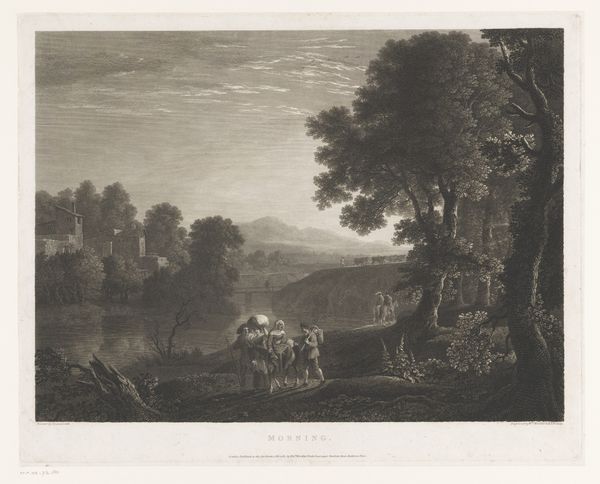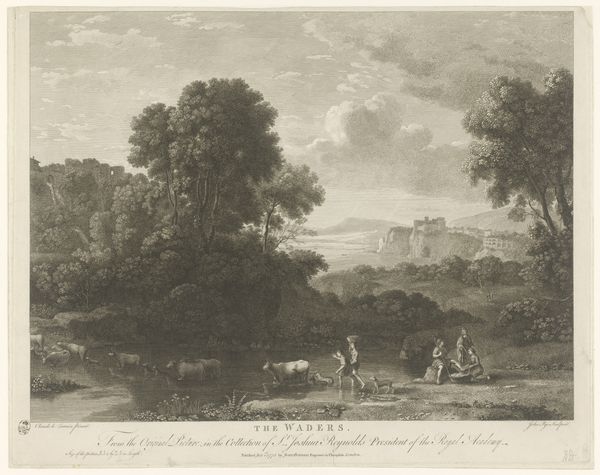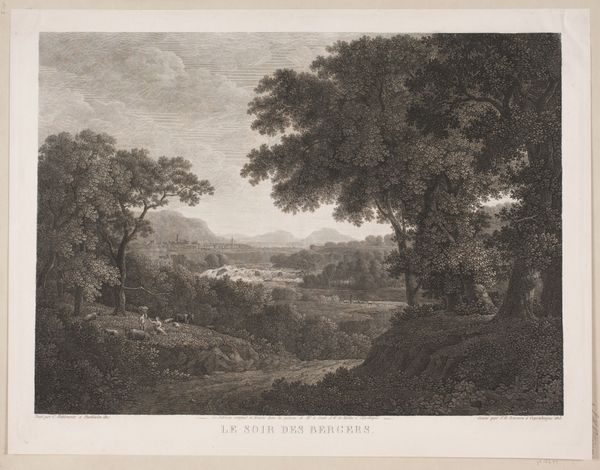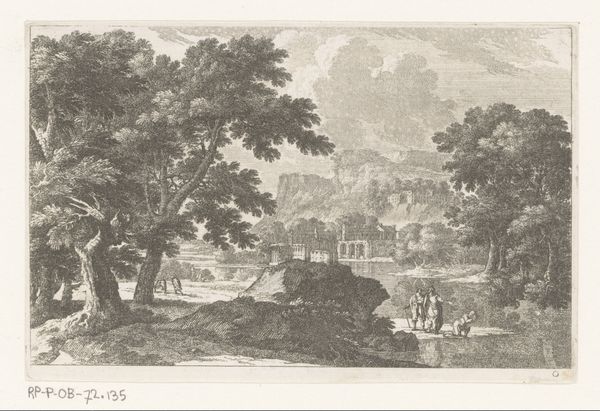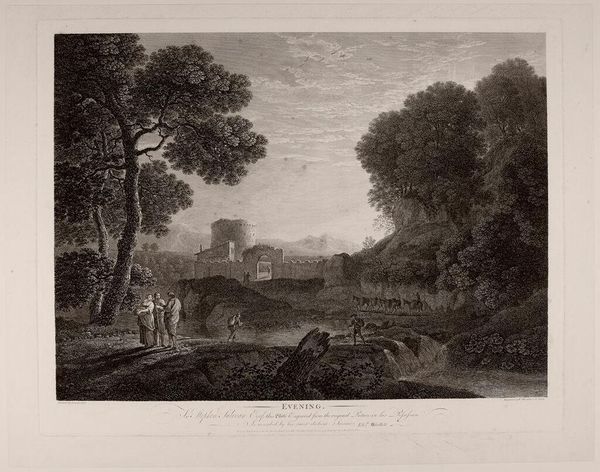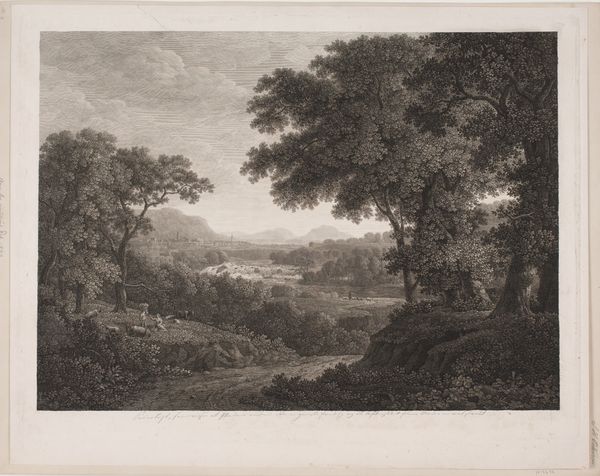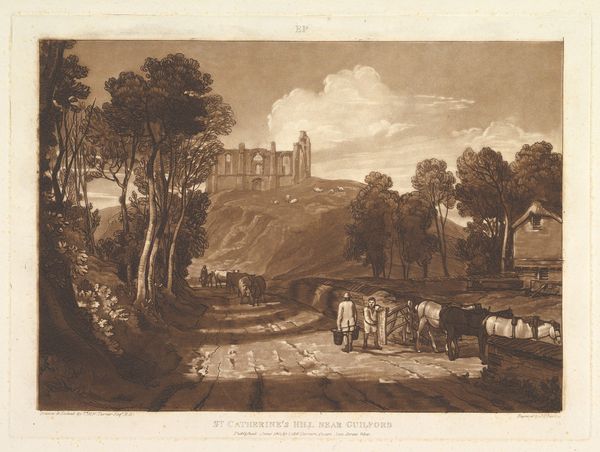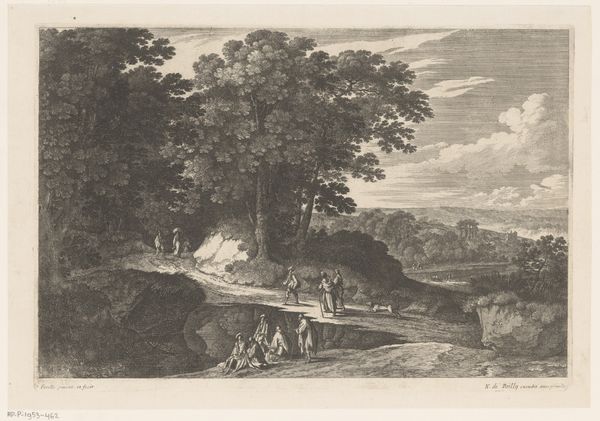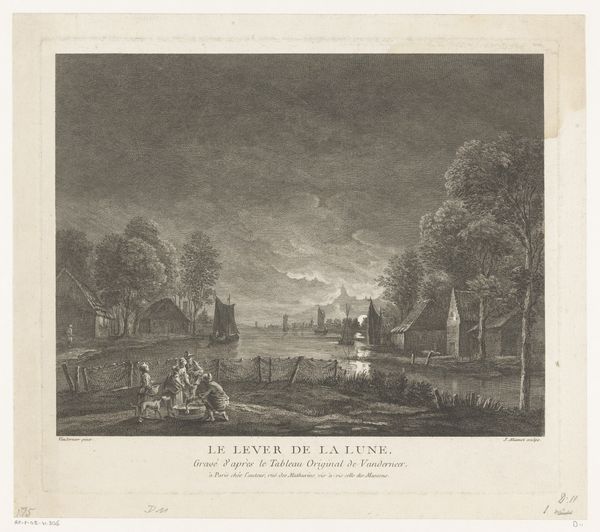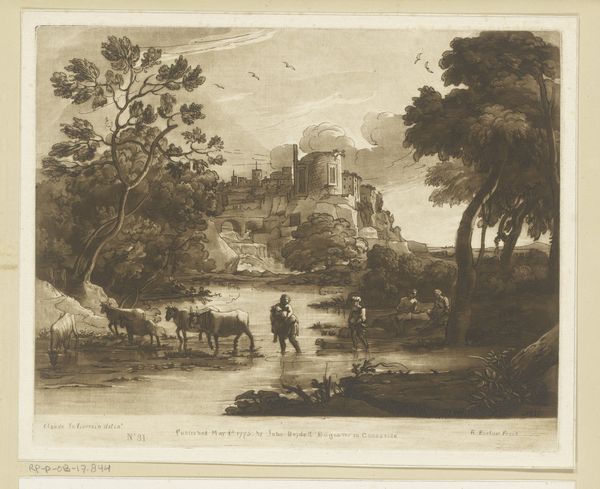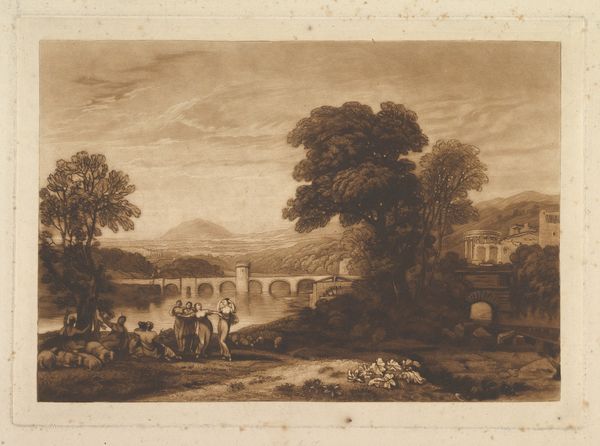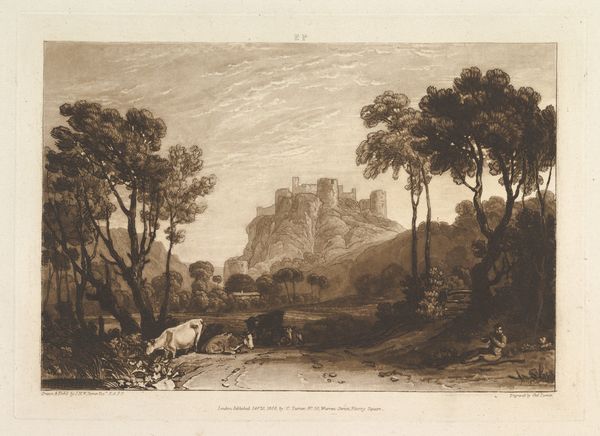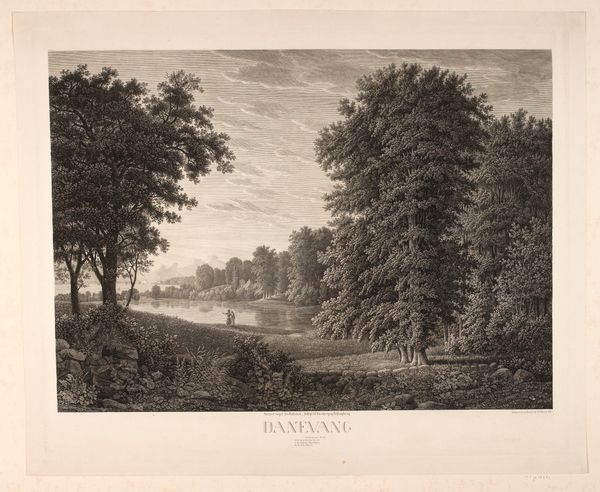
Dimensions: height 444 mm, width 563 mm
Copyright: Rijks Museum: Open Domain
Editor: Here we have "Landscape with Gate and Tower on the Banks of a River," a print made in 1787 by William Woollett. The detailed lines and contrast create a really dramatic scene; it reminds me of theatrical set design, and I am wondering: How do you interpret this work in terms of its historical context? Curator: The theatricality you pick up on is key, I think. Consider the Enlightenment's emphasis on reason and order. But at the same time, there's this burgeoning Romantic sensibility—a fascination with the sublime power of nature and the echoes of a vaguely defined past. Think about the relationship between the figures positioned in the left foreground and that imposing structure in the background. Do they have access to it? Is it a refuge, or is it representative of repressive power structures of that period? Editor: That's interesting, it almost feels like both? The figures are close but also quite removed from the gate. They’re present but separated by a river or divide. Curator: Exactly. And we can read that tension as indicative of the broader social and political unrest of the late 18th century. Consider the rise of industrial capitalism alongside these traditional scenes. What could those figures possibly represent, facing away from us but apparently deeply engaged in private discussion? The "landscape" wasn’t neutral terrain, but an arena where these conflicts were staged. It could also relate to the relationship between colonizer and the colonized. What might an indigenous population read in this? Editor: Wow, I didn't consider those readings at first. Now I see how deeply political even an image that appears to be just an everyday scene can be. Curator: And it is through considering the perspectives of various populations that a print like this offers insight into how cultural hierarchies took shape in European art. Hopefully, that in turn enables us to resist oppression today.
Comments
No comments
Be the first to comment and join the conversation on the ultimate creative platform.
